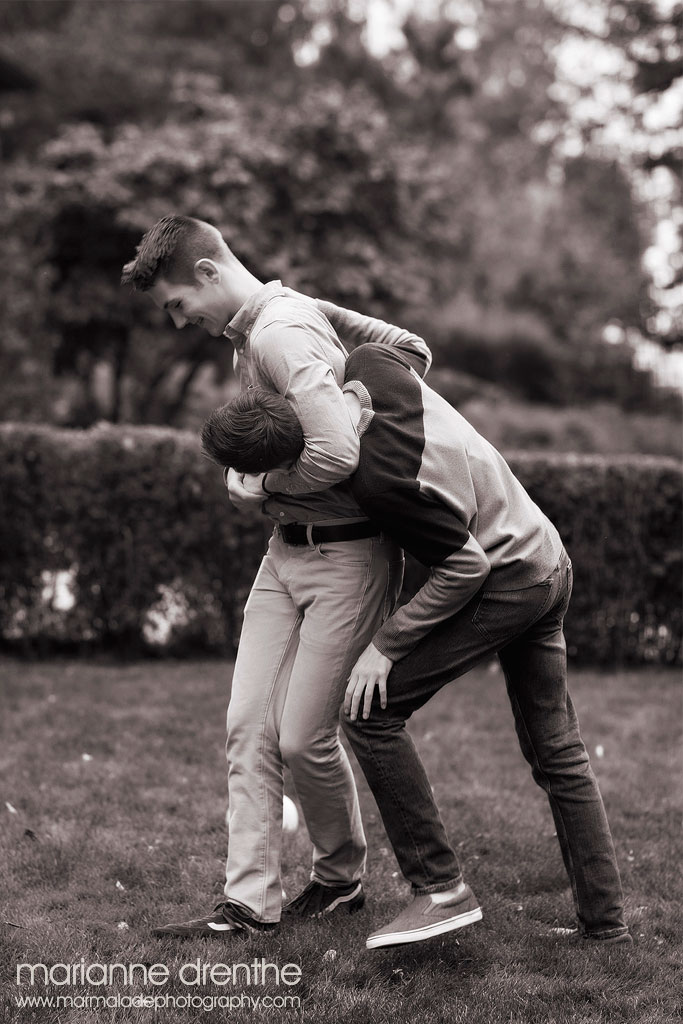Business Names and Logos as Intellectual Property

So many photographers have experienced copying photographer business names, “borrowing” their wording or even using their branding to prop up their new (or established) photography business. It’s a real tale as old as time – or at least a tale as old as the dawn of the digital age. Photographers back in 2005-2006 had discussed these issues on all the (then-popular) internet forums.
We here at Professional Child Photographer want to make clear our stance which parallels the majority of legal and ethical perspectives on the matter: use of another photographer’s branding, business name, or marketing language is a fundamental violation of professional ethics and potentially legal boundaries. Copying photographer business names, branding, verbiage or imagery (without agreement or discussion) is a huge no-no.
This practice of copying branding goes far beyond mere inspiration and it is far from harmless. In many ways it’s a direct attack on another professional’s carefully crafted identity and business.
Understanding Legal Protections: Common Law Trademark
Even if a photographer hasn’t formally registered their business name, they have automatic protection through common law trademark.
What does this mean when you are the photographer who is being copied?
- You can take legal action against someone using a confusingly similar business name within a certain area surrounding your small business
- Your business name is legally protected from the moment you start using it in professional contexts
- Protection extends to your active marketing and service area
- Document your first use date of business name and branding
- Keep consistent business records
- Maintain marketing materials showing continuous use
Click here if you are a photographer who is concerned about your branding
Key Ethical Violations in Branding Appropriation
Ethics is ‘the study of moral philosophy which aims to systematize, defend and recommend concepts of conduct: both right and wrong’ (per Wikipedia). I got a little academic there because the ethics of something and the legalities of that thing are sometimes completely opposite. Ethical behavior refers to concepts of right and wrong that tend to be agreed upon by a group, as opposed to personally-held morals. They’re guidelines.
Here’s how professional snafus and ethical gray areas can affect your career as a photographer within the professional photography industry:
| Professional Snafu | Here’s the Real Deal | Fallout (Yikes!) |
|---|---|---|
| Intellectual Property Theft/”Borrowing” | Directly copying business names, taglines, or unique marketing language – are you kidding me? | Legal challenges, cease and desist orders, potential trademark infringement – YIKES indeed |
| Professional Misrepresentation | Creates confusion in the marketplace about your unique identity – how can you be you if you’re copying him/her? | Loss of credibility, potential client mistrust – if your peers can’t trust you, you can be sure your clients can’t either |
| Community Trust Erosion | Undermining the professional photography community’s ethical standards – can’t trust a hoe (shrug) | Potential ostracization, reputation damage within professional and social networks – it’s no fun for sure |
Why Copying a Photographer’s Business Name or Branding is Never Acceptable
Originality is Your Professional Signature

Your brand should be a unique reflection of your personal creative vision. As someone entering a creative field, mimicking someone else’s vision is creatively and ethically bankrupt. Direct copying of another photographer’s branding demonstrates a fundamental lack of creativity and more importantly – a lack of professional maturity and courtesy toward your peers. The mere act of copying signals an inability to develop your own distinctive professional identity. It leads one to question: if you can’t create your own brand, how are you going to create original work for clients?
Significant Potential Legal Ramifications
Business names can be protected through trademark registration, established business presence, or local business registration. Using a similar or identical business name can lead to potential lawsuits – or at the very least a strongly worded cease and desist letter that will lead to you to forced rebranding, potential financial penalties, and a really upset local competitor who now has to disrupt their business to disrupt yours. On the other end of this? It’s not pleasant for them either.
Community Reputation
The photography community is remarkably interconnected and rather unforgiving of intellectual theft. Word spreads (very) quickly about photographers who lack originality and respect for others’ work, especially with the high number of photographers active on social media. This is how your reputation can be permanently damaged within the industry by what are commonly accepted as unethical practices.
Don’t believe me? Peep the social media posts of Photo Stealers on Facebook.
Constructive Alternatives to Copying
Instead of appropriating another photographer’s brand, try developing your own unique brand voice. Creating your own original marketing materials reflecting who you actually are will shift the focus back onto you and your unique value offerings. Focusing on your specific creative strengths – the things that make your work distinctly yours – is the key to developing your brand voice.
If you’re struggling with finding your own voice it may be wise to seek mentorship from established photographers – folks who can help you develop your professional identity. Most of us are happy to help someone who’s genuinely trying to do it right.
IMITATION IS THE HIGHEST FORM OF FLATTERY THAT MEDIOCRITY CAN PAY TO GREATNESS.
-Oscar Wilde
Want to Build Something Original Instead?
COMING SOON: “Your Brand Starts With Hello” – Complete Brand Development Workbook
We’ve established that copying is easy. Creating is hard work that requires deep diving and introspection. Being creative is the only path to a sustainable, respected photography business—actually, it’s the only path for any arts-based business.
Our premium workbook walks you through the exact process of discovering and refining your unique photographic voice. You’ll follow Debby’s journey as she learns (the hard way) what happens when you skip brand strategy and jump straight to pretty visuals. Through guided exercises, you’ll:
- Develop your authentic creative approach words
- Translate your brand voice into visual identity
- Avoid the costly mistakes most new photographers make
- Build confidence in your unique value proposition
Know thyself. No copying required.
Check back soon to sign up for this exciting branding offering!!
Professional Growth Perspective
Your brand is not just a name or a logo – it’s a comprehensive representation of your professional journey.
Every element of your marketing should reflect your personal artistic vision, communicate your unique value proposition, demonstrate respect for fellow professionals, and build trust with potential clients. If your branding doesn’t do these things, it’s not working for you anyway.
Practical Recommendations
– Conduct Thorough Research Before Finalizing Your Business Name
Before you commit to a business name, logo, or website colors, do.your.homework!
First, search for local photographers using the name you’re considering – check all the search engines. We’re talking: Google, Bing, DuckDuckGo, Start Page, etc. Then you need to look at: local business directories, chambers of commerce sites, and all relevant social media platforms. You’re doing this legwork to be sure you aren’t accidentally stepping on someone else’s established brand or creating confusion in your market – which, as it so happens, is really bad for your business too!
As you research: pay attention to what draws you to certain photographers’ branding. What aspects appeal to you? Dissect why those elements work and what draws you, the viewer, in. Then turn that lens in toward yourself: think about the things you love, the art that moves you, the colors that speak to you. Do you prefer serif or sans-serif fonts? What artistic style are you aiming to achieve for your shooting style aesthetic? Take a look around your own home: what design styles draw you in? What colors, patterns, and textures please your eye? Your authentic brand should feel like home, not like someone else’s house!
– Develop a Brand That Is Authentically and Uniquely Yours
Your brand isn’t just logos, website colors, and clever copy. It’s also your images—they should be signature YOU. Your vision, your ideas, your lighting, your setups. When someone sees your work, they should recognize it as yours before they even see your logo.
– Seek Inspiration, But Never Imitation
We’re visual creatures, and being inspired by others is one of the great things about being human. But here’s the thing: imitation is not the highest form of flattery. The actual Oscar Wilde quote we all know & love? The full quote is actually: “Imitation is the highest form of flattery that mediocrity can pay to greatness.”
Ask yourself:
• Do I want to be the best I can be, or do I want to be a shadow of someone else?
• Can I call myself a creative person if I choose to copy rather than innovate?
– Protect Your Brand Legally
Once you’ve developed your authentic brand, protect it. Consider applying for a Federal Trademark – it’s really not just for major corporations. Small businesses can benefit enormously from federal trademark protection, especially if you plan to grow beyond your immediate area. For comprehensive legal protections you may seriously want to consult with a local business attorney about name and branding protections specific to your state and market.
Final Thought on Why You Can’t Copy Another Photographer’s Business Name or Branding
In the world of professional photography, your integrity is your most valuable asset. Copying another photographer’s brand is a short-sighted strategy that will ultimately undermine your professional credibility and potential for genuine success.
Superficially, creative thinking appears to know no boundaries and being ethical sometimes seems antithetical to the creative process. Once you are involved in conducting a business you have to honor both the legalities and the accepted ethics within your given industry.
Protecting Your Brand: Practical Steps
If you are a photographer and another business owner has directly copied your branding in your local area – know your rights. Also consider federal trademark registration for broader protection.
In addition here are some practical steps you can do right now:
- Monitor Your Online Presence
- Set up Google Alerts for your business name
- Regularly search social media platforms for similar business names
- Check local business directories periodically
- Document Everything
- Keep dated screenshots of your original branding
- Save first published marketing materials
- Maintain a chronological file of your business’s visual and verbal identity
- Proactive Communication
- Politely contact individuals using similar branding
- Request they modify their business identity
- Keep communication professional and documented
- Consult Professionals
- Speak with a local business attorney
- Consider a free initial consultation about trademark protection
- Understand your specific state’s business name protection laws
- Network Awareness
- Join professional photography associations
- Participate in local and online professional networks
- Share experiences and get advice from peers

Want to Build Something Original Instead?
CHECK BACK FOR OUR ABOUT-TO-BE-RELEASED GUIDE
We’ve established that copying is oh-so-easy. Creating is hard work that requires some deep diving and introspection. Being creative is the only path to a sustainable, respected photography business. Actually to be fair: it is the only path for creatives to take when embarking on any arts-based-business.
Our premium guide “Developing Your Creative Vision” walks you through the exact process of discovering and refining your unique photographic voice. You’ll cultivate your own voice – your own look – your own brand.
Know thyself. No copying required.
Found this helpful?
You’re welcome to use any portion of this site on your blog, website, or social media pages!
Please credit any excerpts you use on your site or blog by copying and pasting the following on your site or social media page (with appropriate links enabled):
” This article was written by Marianne Drenthe of Marmalade Photography
www.marmaladephotography.com
and can be found at the Professional Child Photography site at
www.professionalchildphotographer.com ”
